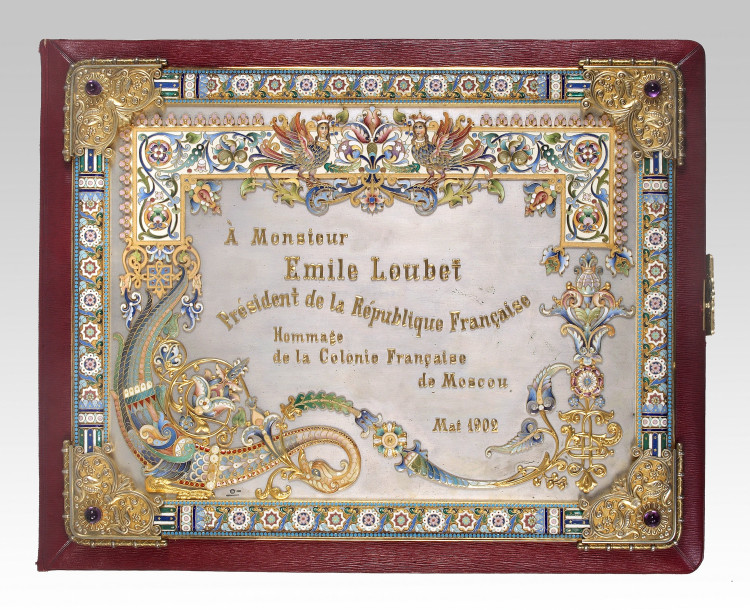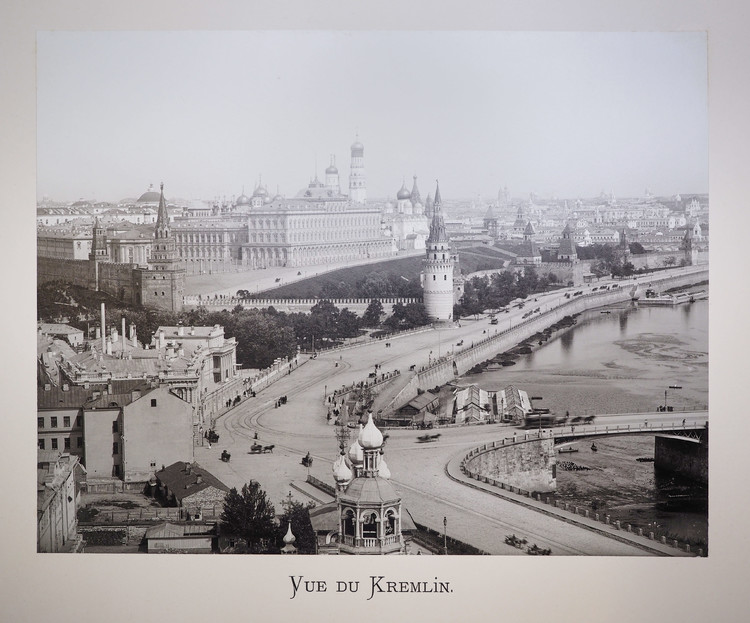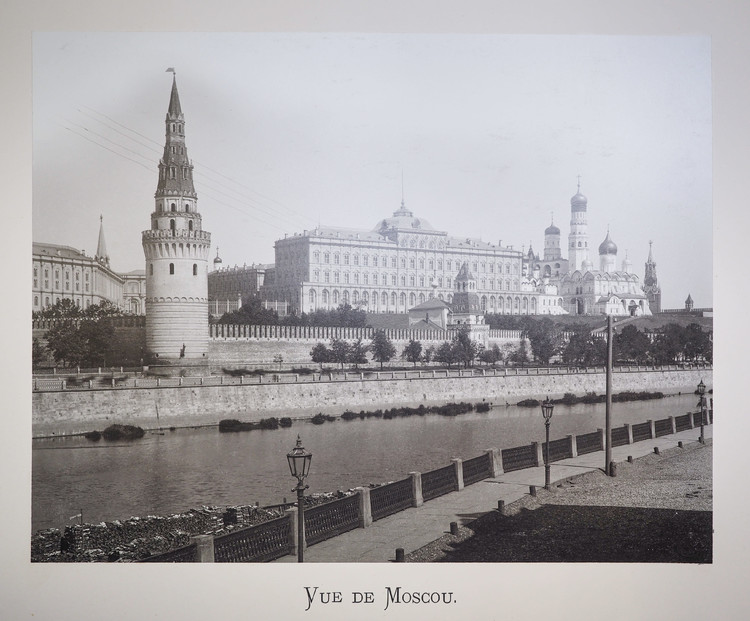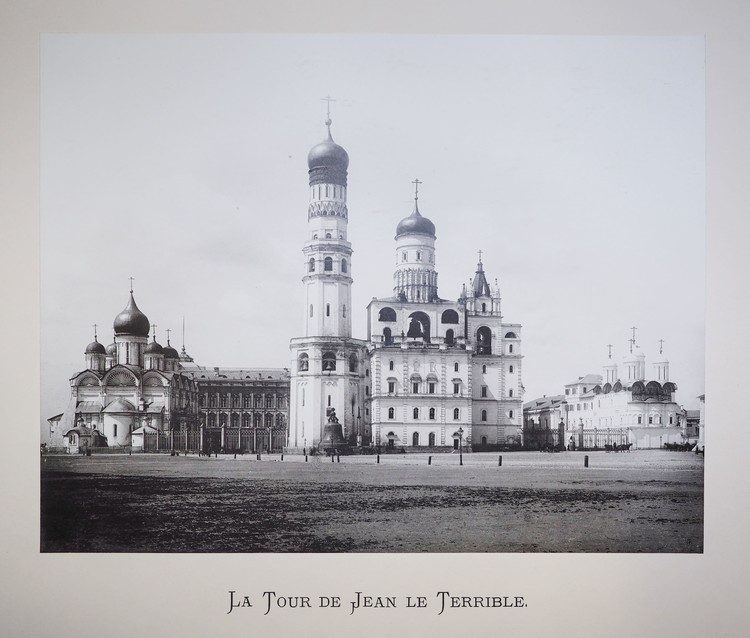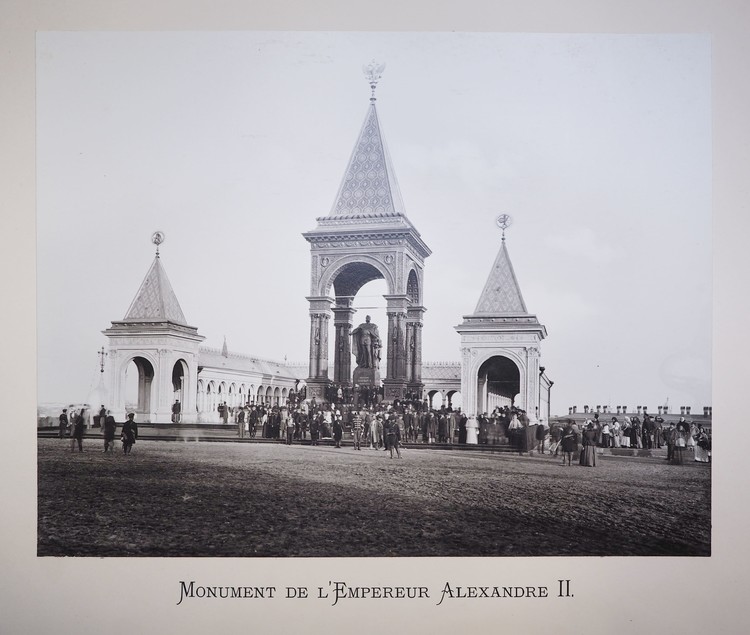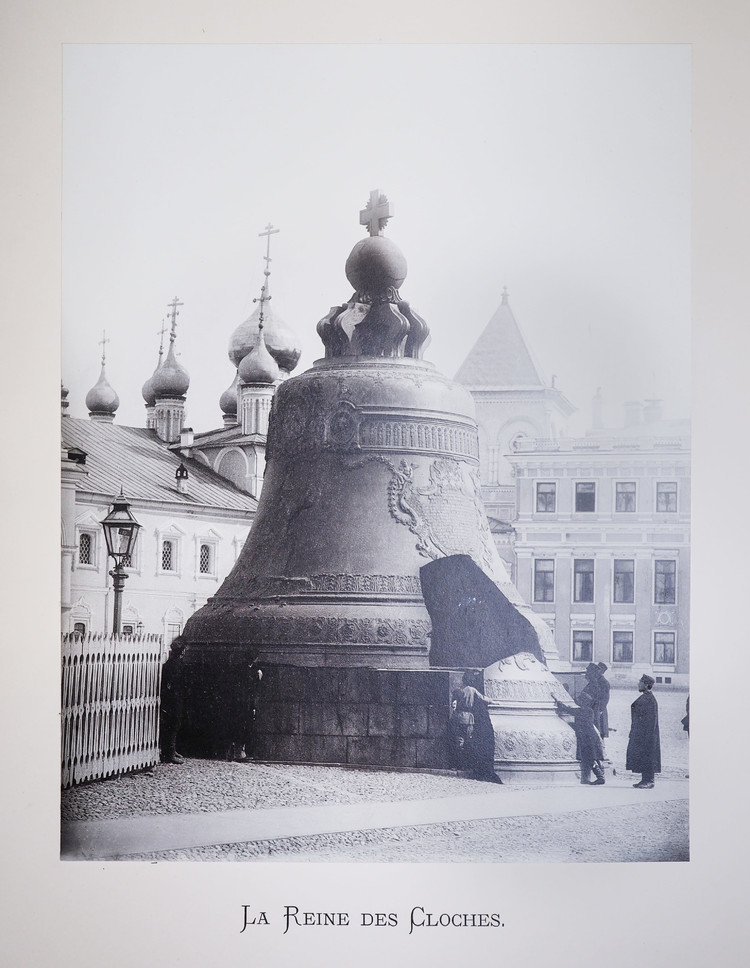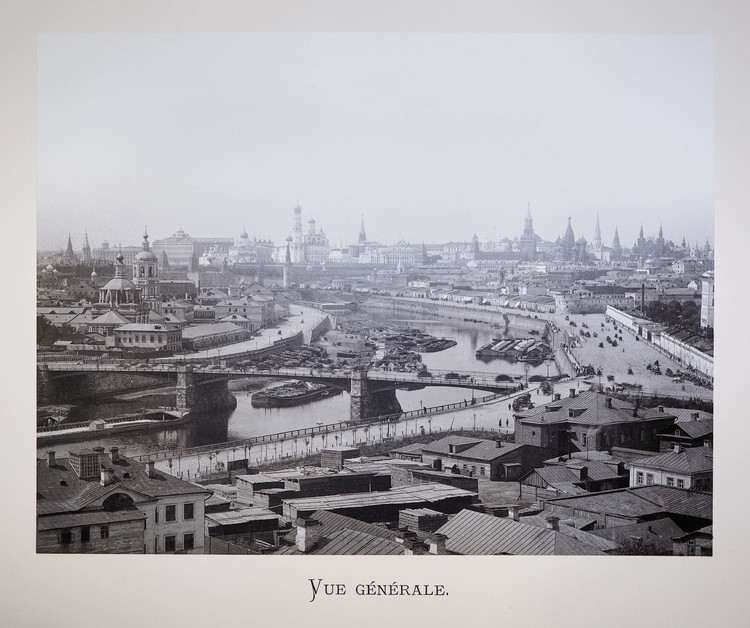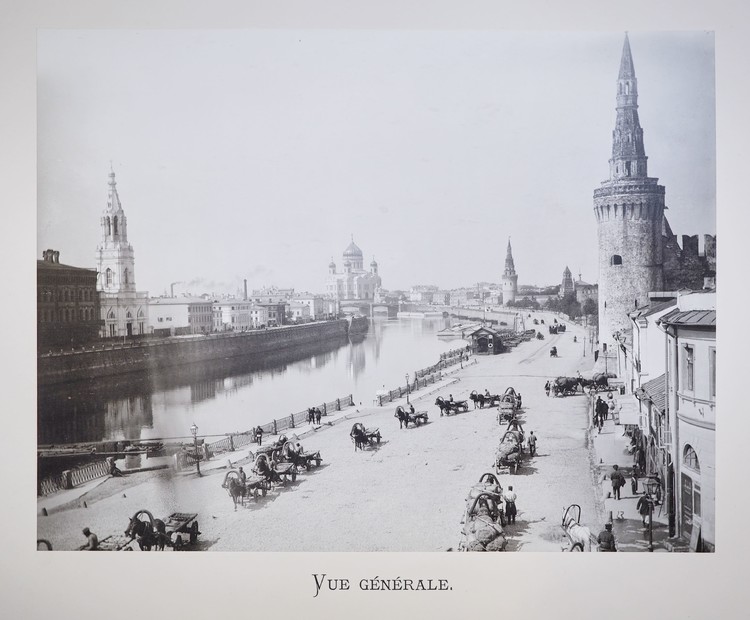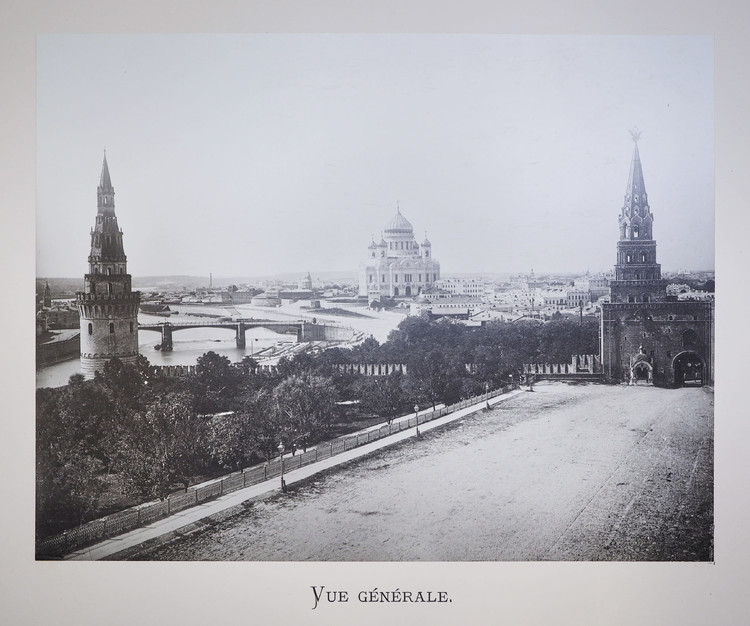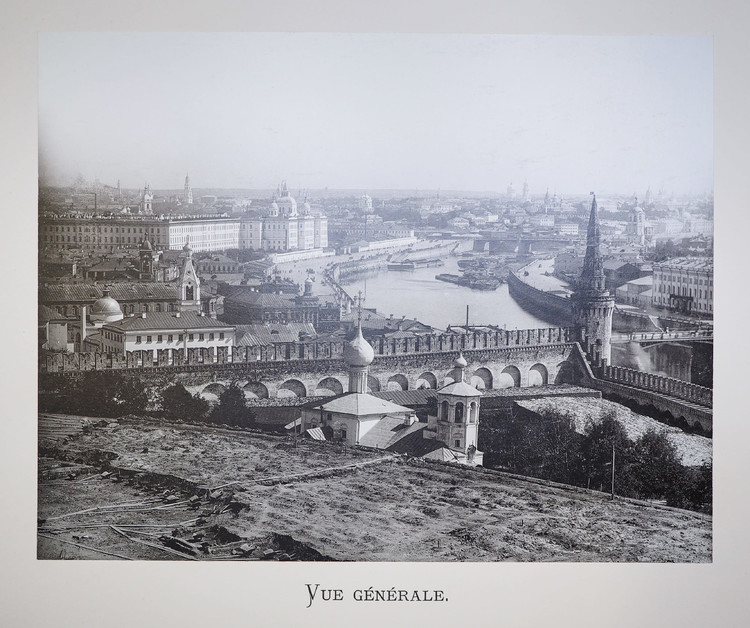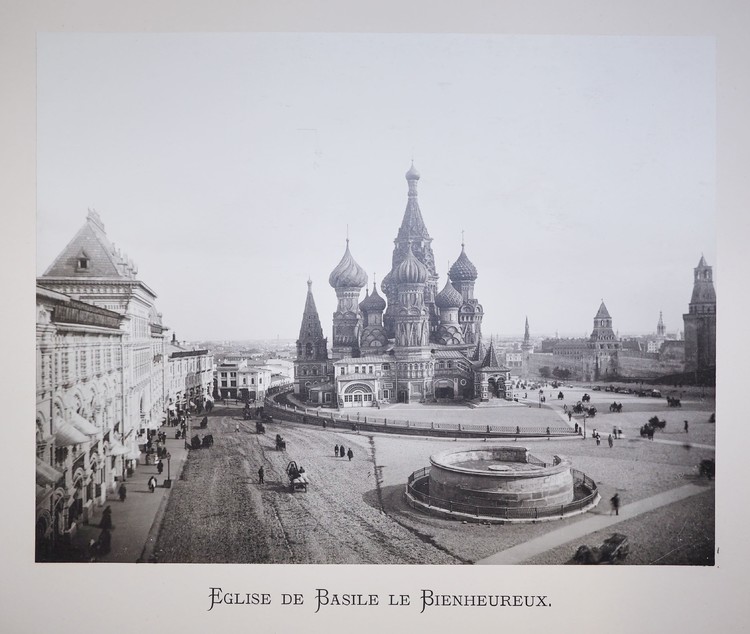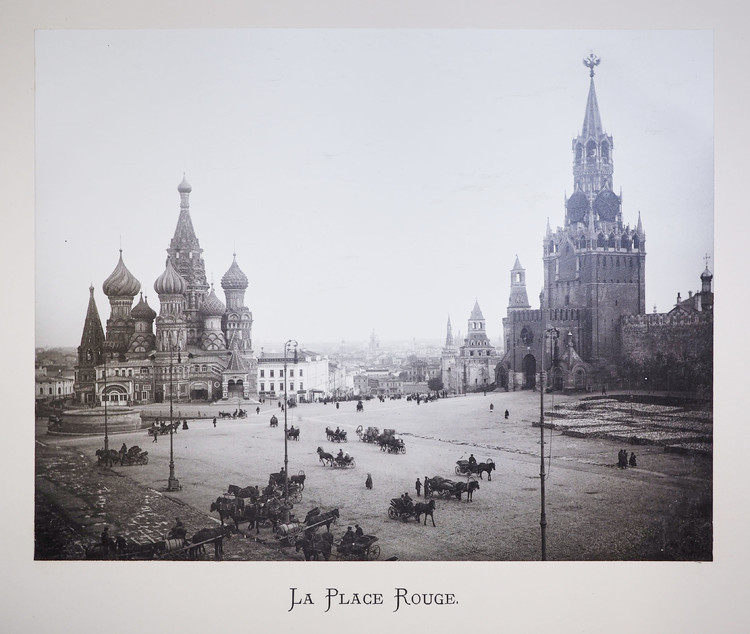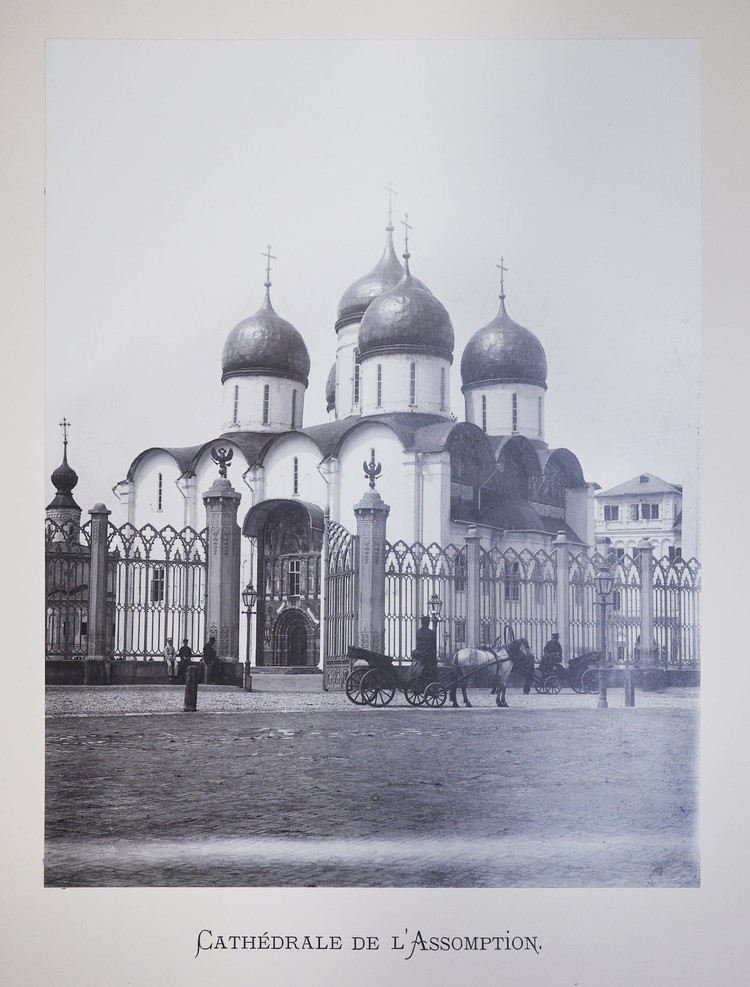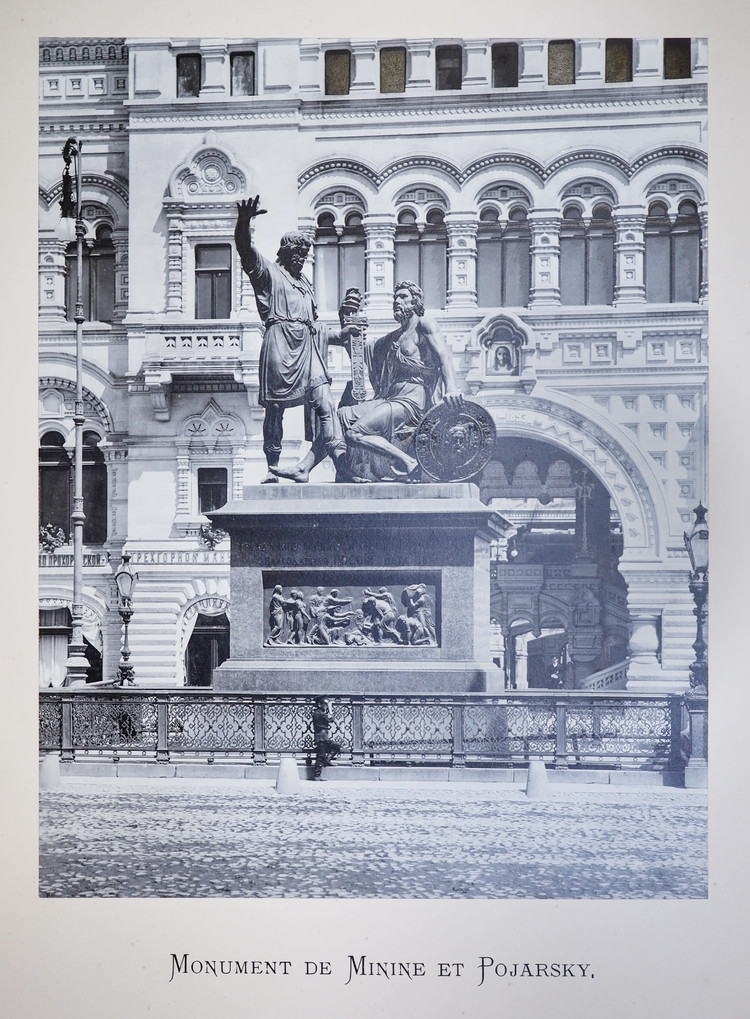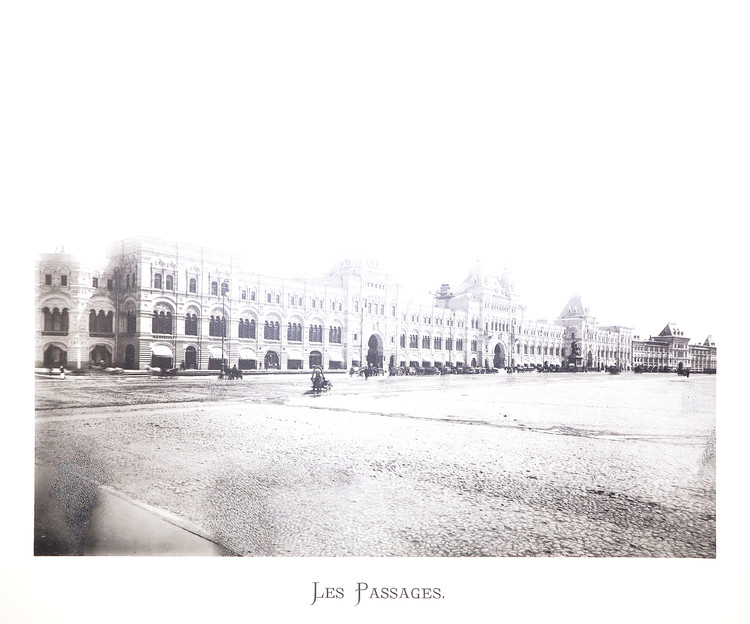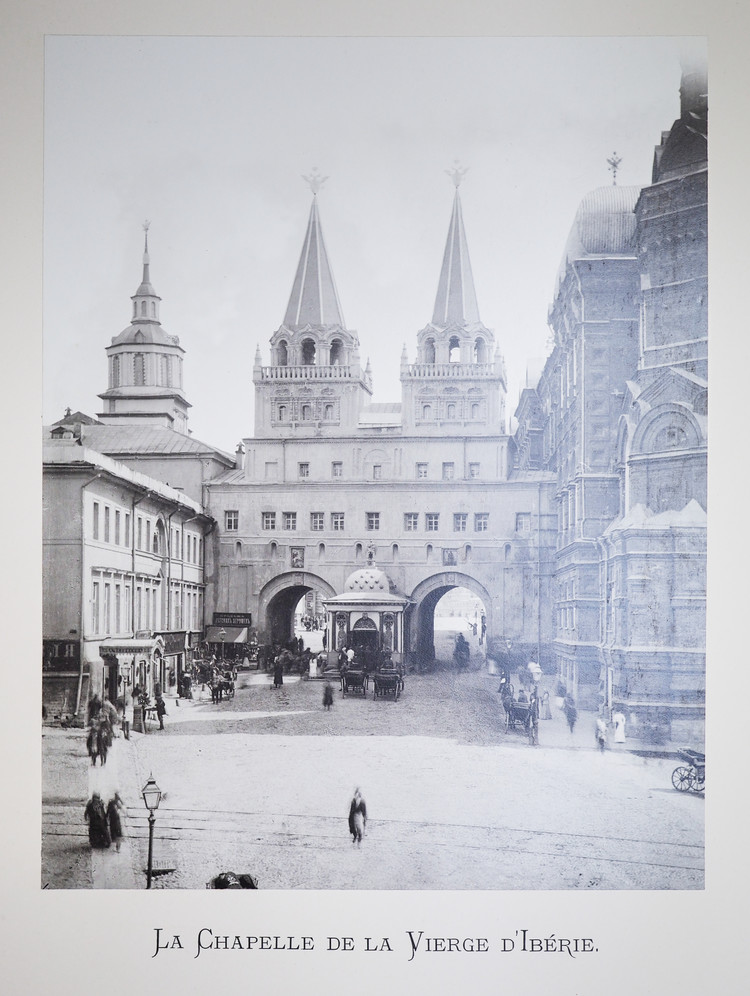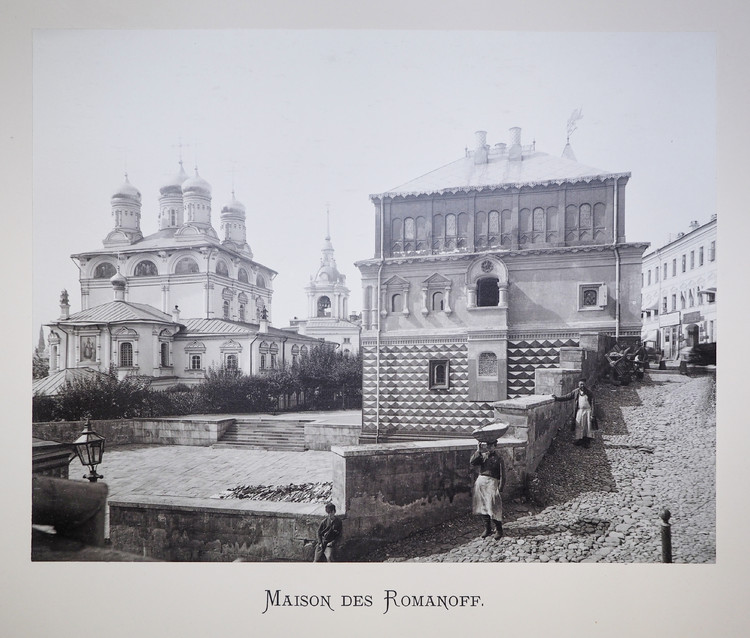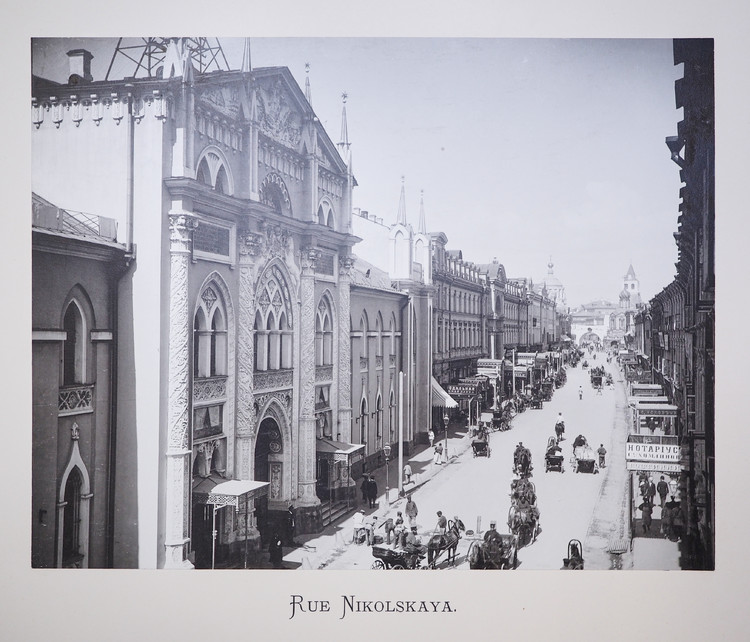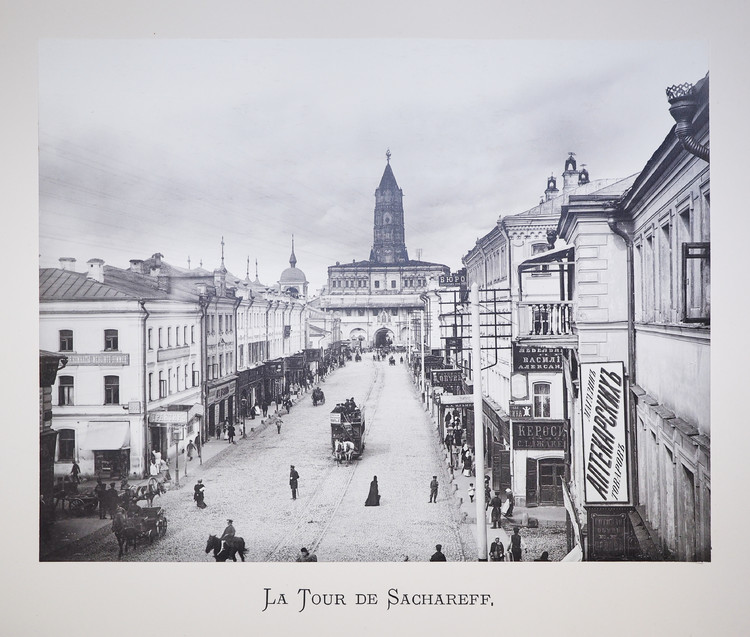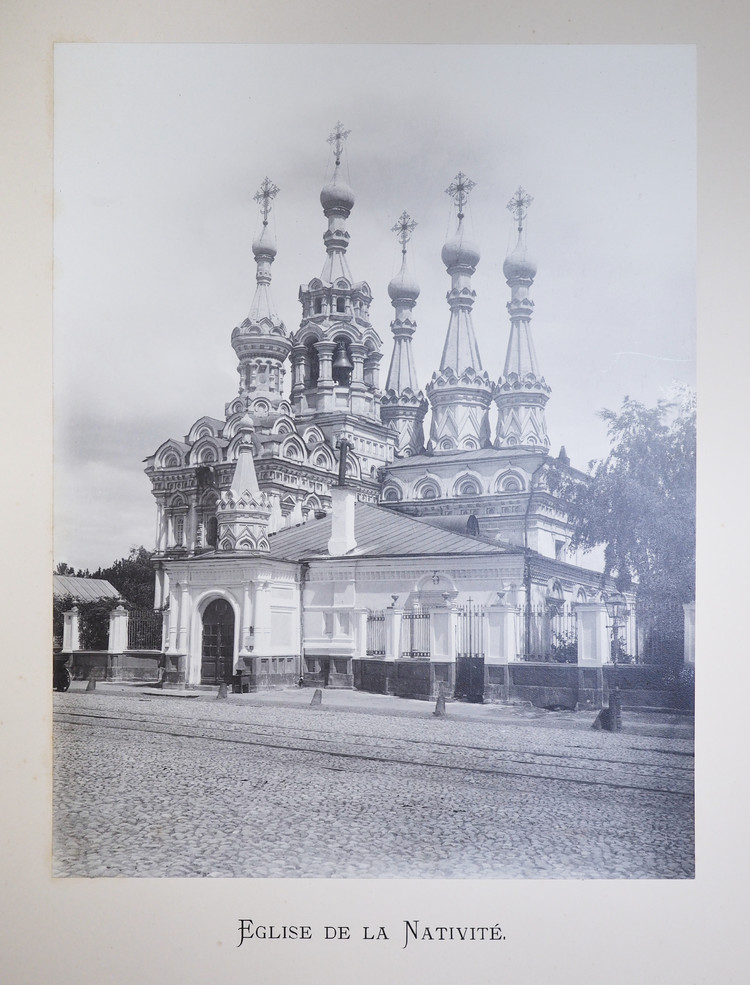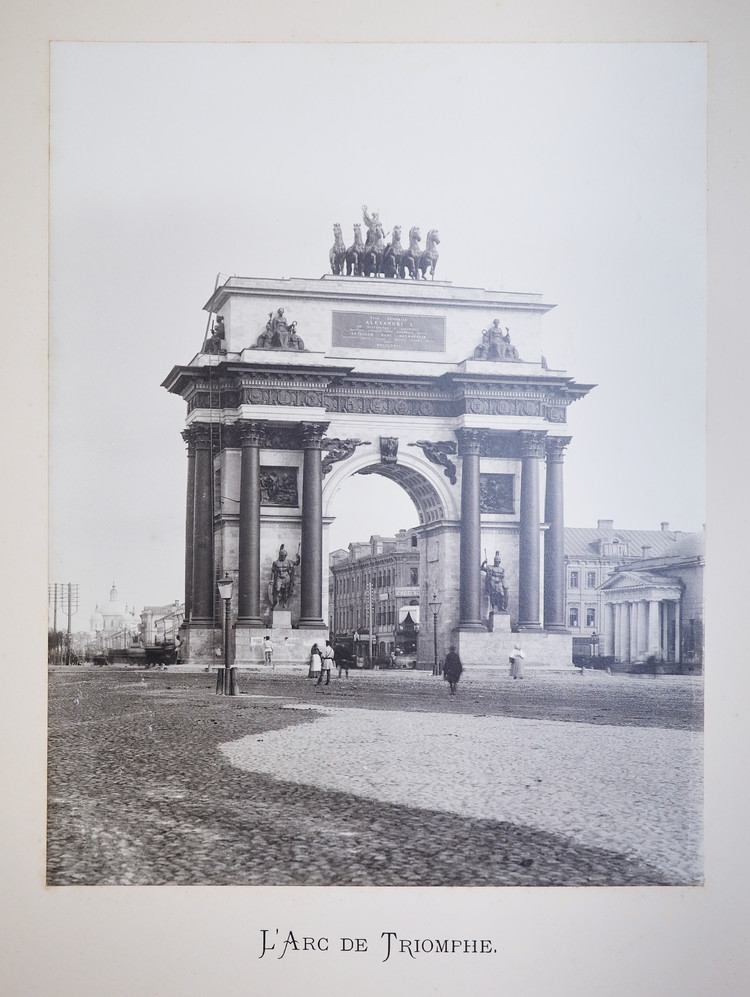The workmasters of Pavel Ovchinnikov’s firm decorated the lid of this luxurious album with enamel paintings of Sirin birds surrounded by a floral fantasy ornament. The album, featuring photographs of the former capital, was given in 1902 by the French colony in Moscow to Émile Loubet, President of France.
The French colony in Moscow developed rather late in comparison to others, but it nevertheless soon made a name for itself in the enormous Russian city thanks to its vitality and influence. It came about at the end of the 18th century and grew from two sources: former residents of the farming colony near Saratov and immigrants fleeing the French Revolution. The Moscow colony was structured around two focal points symbolizing its success and its roots: Kuznetsky Most and the Church of St. Louis of the French. A growing number of French émigrés took up commerce, specifically the trade of luxury goods. In the early 20th century, the Franco-Russian political alliance enabled the emergence of pro-Russian propaganda in France, inter alia advertising the construction of railroads in the Russian Empire.
Émile Loubet, seventh president of the Third Republic, found himself in Russia in 1902 on a state visit aimed at strengthening the Franco-Russian Alliance and inspecting allied troops. The visit was celebrated with pomp and circumstance. A great deal of presents were prepared for it, among them a bratina (traditional drinking bowl) made by Pavel Ovchinnikov, which was given to the sailors on the 1st-class cruiser Guichen that accompanied the president on his visit.
